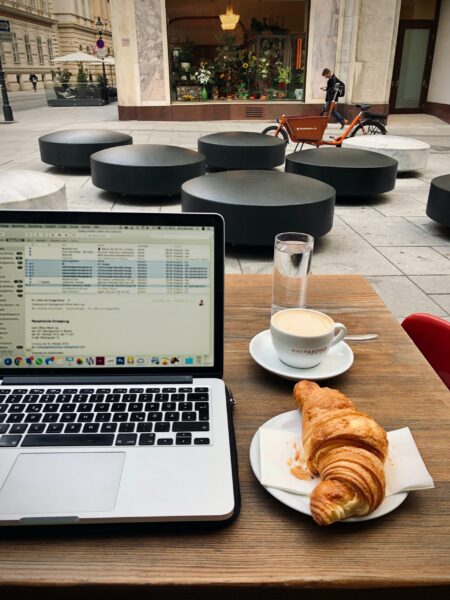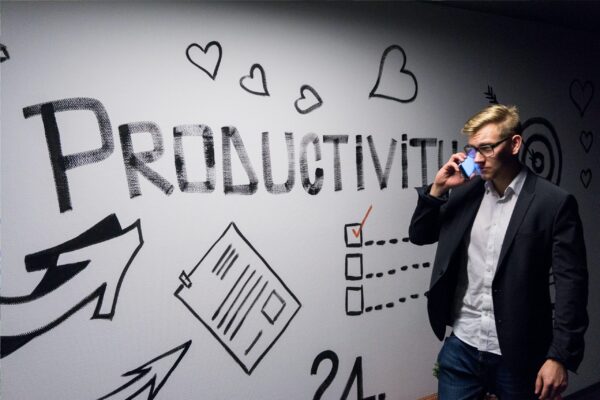COVID has certainly challenged the way we work.
 Lockdowns forced many of us into a situation where we had to work remotely, connected only by phone, emails, and so many video calls that a new phrase and condition came into being: Zoom fatigue. We’ve all felt it!
Lockdowns forced many of us into a situation where we had to work remotely, connected only by phone, emails, and so many video calls that a new phrase and condition came into being: Zoom fatigue. We’ve all felt it!
While many employers were resistant to remote working prior to the pandemic, they could see that it was possible and that ‘in the office’ isn’t the only way.
Meanwhile, it opened workers’ eyes to a better work/life balance, one where we could claim hours on our daily commute and spend more time exercising and with our pets and families.
Now COVID has become more socially acceptable – we’re no longer in fear of catching it – and restrictions have eased, workplace flexibility is on our minds and a big factor in employee recruitment and retention.
Because of this, there has never been a better time to embrace workplace flexibility and reimagine the work/life balance in our organisations.
Understanding workplace flexibility
Workplace flexibility, or work flexibility, essentially means allowing employees to choose to work in a way that suits them and their other life commitments. It emphasises the willingness and ability to adapt to change.
In a flexible workplace, the needs of both employee and employer are met.
Workplace flexibility includes:
- Where they work – For example, in the office, from home or elsewhere
- When they work – There is no set 9-5 as long as work is done
- How they work – They can work in a manner that suits them

Different types of workplace flexibility
There are two different types of workplace flexibility:
- Informal workplace flexibility is occasional, is agreed on between an employee and a manager, and has little impact on others in the workplace. It involves Individual arrangements to personalise flexibility in the workplace (not one size fits all, as personal circumstances vary).
- Formal workplace flexibilityis typically an ongoing arrangement that’s different from a team’s standard hours and work location. It could include working remotely or a schedule change.
Examples of flexible working arrangements include:
- Flexible start/finish times
- Compressed hours (working more hours over fewer days)
- Part-time work
- Casual work
- Job sharing
- Flexible rostering
- Working from home or another location
- ‘Purchasing’ extra paid leave
- Unpaid leave
- Taking rostered days off as two half days
- Time off in lieu
- Flexitime (allowing employees to ‘bank’ extra hours, which are then exchanged for time off)
- Gradual increase or decrease in work hours (for example, after parental leave or as an employee transitions to retirement).

Benefits of flexibility in the workplace
So what exactly are the benefits of workplace flexibility? Well, there are quite a few.
Increased productivity
A successful workplace flexibility policy leads to increased engagement and performance, which may improve business profits.
According to a Gartner survey, 43% of respondents said that flexible working hours helped them achieve greater productivity, and 30% said that less or no commuting time enabled them to be more productive.
Employee attraction and selection
Employees are increasingly seeking more autonomy over where, when and how they work. For many employees, flexible working is a highly desirable workplace benefit.
A study by SEEK found that 63% of candidates think work-life balance is extremely important. And more than half (56%) want hirers to offer remote or flexible working.
Improved employee wellbeing
Flexible working can give employees the autonomy to balance their other commitments, such as caring for children, people with disabilities, the sick or the elderly. Flexible working can also help employees manage their time to allow for hobbies, studying, or keeping fit.
A recent study found that over a quarter (27.4%) of people said the key benefit of having a better work-life balance was more time to invest in their health and wellness.
Enhancing diversity and women in leadership
Organisations offering family and caring-friendly working policies are more likely to boost the number of female employees in the workplace.
Whether an industry or occupation is seen to be flexible and have a family-friendly culture is a driving factor for many women when making decisions about paid work, especially those returning to paid work after caring for children. This also works at a business level.
Futureproofing the workplace
Australia has an ageing population, which is expected to impact labour force participation rates as older Australians continue to retire.
Research by the Australian HR Institute (AHRI) found that the number one way to encourage older workers to stay in the workplace is to offer flexible work options, particularly flexible working hours and part-time.

Creating a workplace flexibility strategy
Now you’ve seen the benefits of workplace flexibility, it’s time to make flex happen in your organisation. Importantly, there’s no one size fits all. Every business will be different, and some will have more restrictions than others.
To develop a workplace flexibility strategy, you must first make a case for change. What specific benefits are you reaching for? Next, you need to ensure all leaders are on board.
Openly discussing ideas and exploring operational impacts will help you understand how flexible working will look in your organisation. Don’t forget to have conversations with employees to see what flexible options they would like.
Once an approach has been agreed on, put a formal workplace flexibility strategy in place, then continually test and monitor it to see how it’s working. It may take some time to find the right balance.
Workplace flexibility: beyond a benefit
Gone are the times when offering workplace flexibility was seen as a competitive advantage built into an organisation’s Employee Value Proposition (EVP). It’s now the social norm. Be creative and think outside the square about what your organisation can offer in your workplace flexibility strategy.




